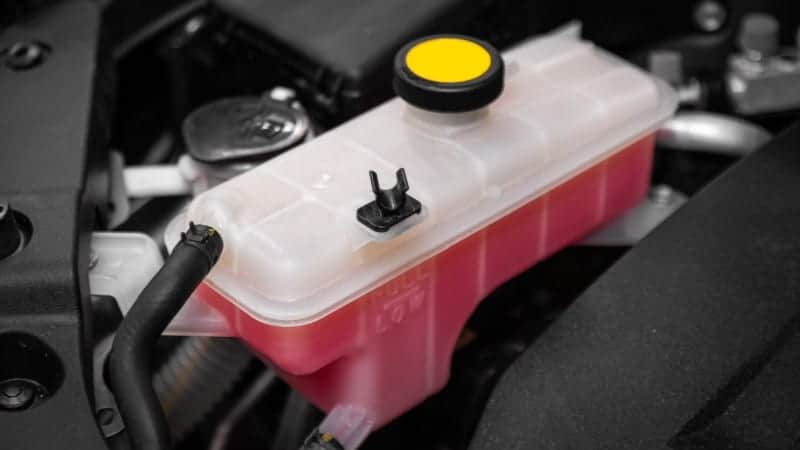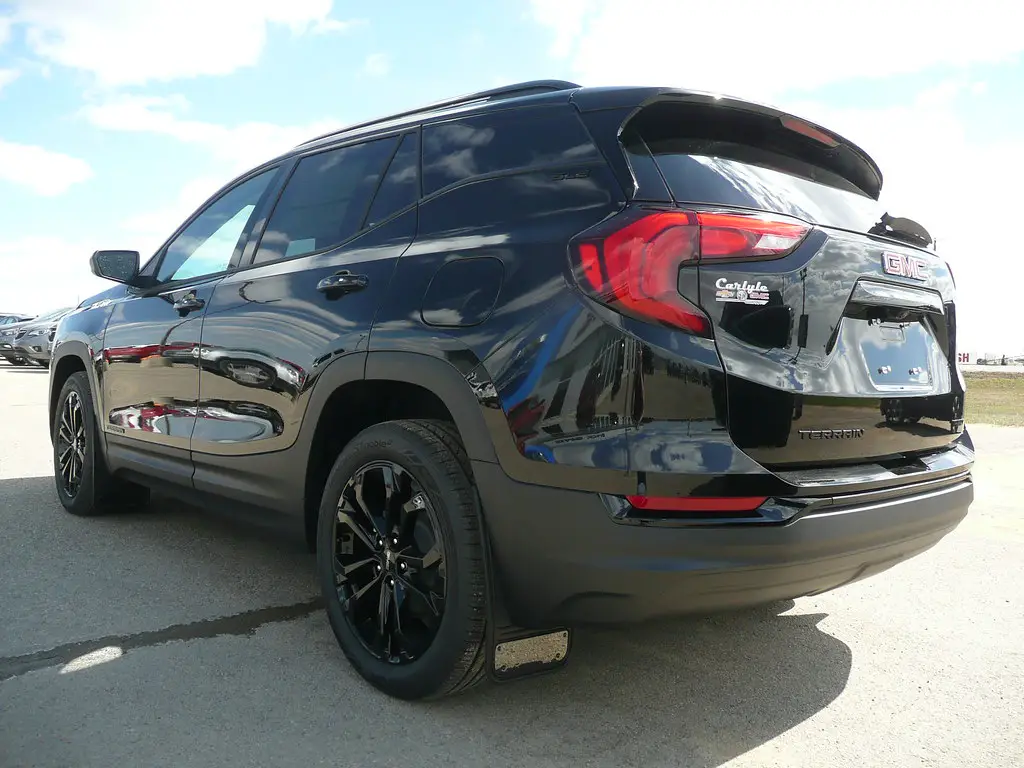Ever noticed your car’s Coolant Reservoir is full, but the Radiator stays empty?
It’s a common issue that might be more straightforward than you think.
This scenario sparks questions about your vehicle’s cooling system efficiency.
In this article, we cut through the complexity and get to the root of why your Coolant Reservoir is topped up while the Radiator seems neglected.
From potential leaks to thermostat hiccups, we break down the possible reasons behind this imbalance.
Understanding these basics is key to keeping your car running smoothly and avoiding potential engine troubles.
Let’s explore the reasons why the Coolant Reservoir is full while the Radiator isn’t getting its fair share.
Also Read: [SOLVED] Why Doesn’t Google Maps Audio Work In My Car
What are the reasons why the Coolant Reservoir Is Full But Radiator Empty in your car?
1: Coolant Leak
A common culprit for a full reservoir and an empty radiator is a coolant leak. This could be due to a damaged hose, a worn-out gasket, or a crack in the radiator itself. The leak allows coolant to escape, leaving the radiator with insufficient fluid.
2: Faulty Radiator Cap
The radiator cap plays a crucial role in maintaining the system’s pressure. If the cap is faulty or not sealing properly, it can lead to a loss of coolant through evaporation. This results in a full reservoir and an inadequately filled radiator.
3: Air Pockets in the Cooling System
Air pockets within the cooling system can prevent the proper circulation of coolant. This can lead to a situation where the coolant accumulates in the reservoir while leaving the radiator partially or completely empty.
4: Thermostat Issues
A malfunctioning thermostat may not open properly to allow coolant to flow into the radiator. This can cause the coolant to remain in the reservoir, creating an imbalance in the system.
5: Blocked Radiator
Over time, radiators can accumulate debris, rust, or mineral deposits that hinder the flow of coolant. If the radiator is partially or completely blocked, it won’t be able to draw in coolant from the reservoir, leaving it empty.
6: Cooling System Bleeding Not Done Properly
When the cooling system is serviced, it needs to be properly bled to remove air pockets. If this process is not done correctly, air bubbles can trap coolant in the reservoir, preventing it from reaching the radiator.
7: Radiator Overflow Hose Issues
The radiator overflow hose directs excess coolant from the radiator to the reservoir. If this hose is damaged or disconnected, it can impede the transfer of coolant back to the radiator, causing the reservoir to stay full while the radiator remains empty.
How do you fix Coolant Reservoir Full But Radiator Empty Problems?

Addressing the issue of a Coolant Reservoir being full while the Radiator remains empty requires a systematic approach to identify and rectify the underlying problems. Here’s a detailed guide on how to fix this common automotive dilemma.
-
Locate and Repair Coolant Leaks
Begin by inspecting the entire cooling system for leaks. Check hoses, gaskets, and the radiator itself for any visible signs of damage or moisture. If a leak is detected, replace or repair the affected component promptly to prevent further coolant loss.
-
Check and Replace the Radiator Cap
Assess the condition of the radiator cap. A faulty or ineffective cap can lead to coolant evaporation, leaving the radiator empty. Replace the cap if it shows signs of wear, and ensure it is sealing the system properly to maintain the required pressure.
-
Bleed the Cooling System
Properly bleed the cooling system to remove any air pockets that may be preventing the circulation of coolant. This involves opening the radiator or designated bleed valve while adding coolant to ensure a continuous flow without air obstruction.
Important: Understanding Radiator Fans: An In-Depth Guide
-
Examine and Replace the Thermostat
Test the thermostat to ensure it opens and closes as needed. A malfunctioning thermostat can impede coolant flow to the radiator. If it is found to be faulty, replace it with a new one to restore proper functioning.
-
Flush and Clean the Radiator
If the radiator is blocked with debris, rust, or mineral deposits, a thorough flush and cleaning are necessary. Use a radiator flush solution to remove any obstructions and ensure the coolant can circulate freely through the system.
-
Verify Radiator Overflow Hose Functionality
Inspect the radiator overflow hose for damage or disconnection. This hose directs excess coolant from the radiator to the reservoir. If it is compromised, repair or replace it to facilitate the proper transfer of coolant between the two components.
-
Perform a Pressure Test
Conduct a pressure test on the cooling system to identify any hidden leaks or weaknesses. This test helps pinpoint areas that may not be immediately visible during a visual inspection, allowing for more comprehensive troubleshooting.
-
Refill and Monitor
After addressing the identified issues, refill the radiator with the appropriate coolant mixture. Monitor the system for any signs of abnormal coolant loss or overheating, ensuring that the coolant levels in both the reservoir and radiator remain stable.
Why is coolant not returning to radiator from reservoir?
Coolant may not return to the radiator from the reservoir due to various issues. Common reasons include coolant leaks, a faulty radiator cap, air pockets in the cooling system, a blocked radiator overflow hose, seal problems with the radiator cap, coolant system contamination, radiator core blockage, thermostat malfunctions, and improper coolant mixture.
To address these issues, inspect the system for leaks, check the radiator cap and overflow hose, bleed air from the system, flush the radiator, and ensure the thermostat is functioning correctly. Additionally, be mindful of potential blockages and contamination in the cooling system.
Regular maintenance and prompt attention to these factors are essential for promoting efficient engine cooling and preventing damage. If uncertainties persist, consulting a professional mechanic is recommended.
Why is my coolant empty after filling?
If your coolant is consistently empty after filling, it may be due to a coolant leak, a faulty radiator cap, internal engine issues, coolant evaporation, air pockets, overheating problems, an incorrect coolant mixture, coolant system contamination, or reservoir issues.
Inspect the system for leaks, check the radiator cap, bleed air from the system, and ensure proper coolant levels and mixture. If the problem persists, consult a professional mechanic for a thorough diagnosis and resolution.
Can I use water instead of coolant?

While water can be used temporarily in a vehicle’s cooling system, it is not recommended as a long-term substitute for coolant. Coolant, also known as antifreeze, serves several important functions beyond preventing freezing in cold temperatures:
- Freeze Protection: Coolant contains antifreeze agents that prevent the liquid from freezing in cold weather, which is essential for maintaining the functionality of the cooling system.
- Boil Protection: Coolant raises the boiling point of the liquid, preventing it from boiling over in high-temperature conditions. This is crucial for avoiding overheating in the engine.
- Corrosion Prevention: Coolant contains additives that protect the engine and radiator from corrosion, helping to extend the lifespan of these components.
- Lubrication: Some coolants include lubricating agents that help reduce wear on the water pump and other components of the cooling system.
Using water alone, especially in extreme temperatures, can lead to several issues:
- Freezing: Water will freeze in cold temperatures, potentially causing damage to the engine and cooling system.
- Boiling Over: Without the elevated boiling point provided by coolant, water may reach its boiling point under high temperatures, leading to overheating and potential engine damage.
- Corrosion: Water lacks the corrosion inhibitors found in coolant, which can result in rust and corrosion within the cooling system.
If you find yourself low on coolant, it’s advisable to top off the system with the appropriate coolant mixture recommended by the vehicle manufacturer. Using water in an emergency is acceptable for a short duration, but it’s essential to replace it with the proper coolant mixture as soon as possible to ensure the longevity and optimal performance of the cooling system.
How do I know if my radiator is blocked not circulating coolant?
Several signs can indicate that your radiator may be blocked and not circulating coolant properly. Here are some key indicators to look for:
-
Overheating
If your engine consistently overheats, it could be a sign of poor coolant circulation. The radiator’s primary function is to dissipate heat, and if it’s blocked, the engine won’t receive adequate cooling.
-
Uneven Temperature Across the Radiator
After your car has been running, carefully feel different areas of the radiator. If some parts are significantly cooler than others, it may suggest that coolant is not circulating properly, indicating a blockage.
-
Coolant Level Fluctuations
Regularly check your coolant level when the engine is cold. If you notice frequent fluctuations in the coolant level, it may indicate a circulation problem. A properly functioning radiator should maintain a consistent coolant level.
-
Cold Spots in the Radiator
After the engine has warmed up, touch various parts of the radiator carefully. Cold spots on the radiator surface may suggest that coolant is not flowing through that area, indicating a blockage.
-
Visible Rust or Debris
Check the radiator for visible signs of rust, debris, or sediment. These can accumulate and block the flow of coolant. Rusty or discolored coolant may also indicate corrosion within the radiator.
-
Sludge in the Coolant
Open the radiator cap and inspect the coolant for any signs of sludge or contaminants. Sludge can accumulate and impede the circulation of coolant, leading to cooling system inefficiencies.
-
Coolant Leaks
Look for any visible coolant leaks around the radiator or in the engine bay. Leaks may be a result of blockages or damage to the radiator, causing coolant to escape.
-
Inconsistent Heating Inside the Vehicle
If you notice inconsistent heating in the passenger cabin, it may indicate poor coolant circulation. The heater core, which relies on hot coolant from the radiator, may not function properly if there is a blockage.
FAQs About Coolant Reservoir Full But Radiator Empty
Why is my coolant reservoir full but the radiator empty?
This discrepancy could be due to various reasons, such as coolant leaks, a faulty radiator cap, air pockets in the cooling system, or issues with the thermostat. Identifying the specific cause is essential for resolving the imbalance.
Is it safe to drive with a full coolant reservoir but an empty radiator?
Continuing to drive in this condition can lead to engine overheating and potential damage. It’s crucial to address the underlying issue promptly to ensure proper cooling system function.
Can I simply add more coolant to the reservoir to solve the problem?
While topping up the coolant reservoir is a temporary solution, it’s essential to investigate and fix the root cause. Adding more coolant without addressing the issue can lead to ongoing problems.
How can I check for coolant leaks in the cooling system?
Inspect hoses, connections, the radiator, and the water pump for visible signs of coolant leakage, such as wet spots or puddles. A pressure test can also help identify hidden leaks.
What should I do if I suspect air pockets in the cooling system?
Bleeding the cooling system is crucial to remove air pockets. Follow the manufacturer’s guidelines for your specific vehicle to ensure proper bleeding and optimal coolant circulation.
Conclusion – Coolant Reservoir Full But Radiator Empty
Keeping an eye on why your Coolant Reservoir is full while the Radiator stays empty is crucial for your car’s well-being.
From fixing leaks to making sure the coolant circulates smoothly, a little attention goes a long way.
Ignoring it might lead to overheating and headaches down the road.
So, stay on top of things, give your vehicle the care it deserves, and you’ll be cruising smoothly for miles to come.




